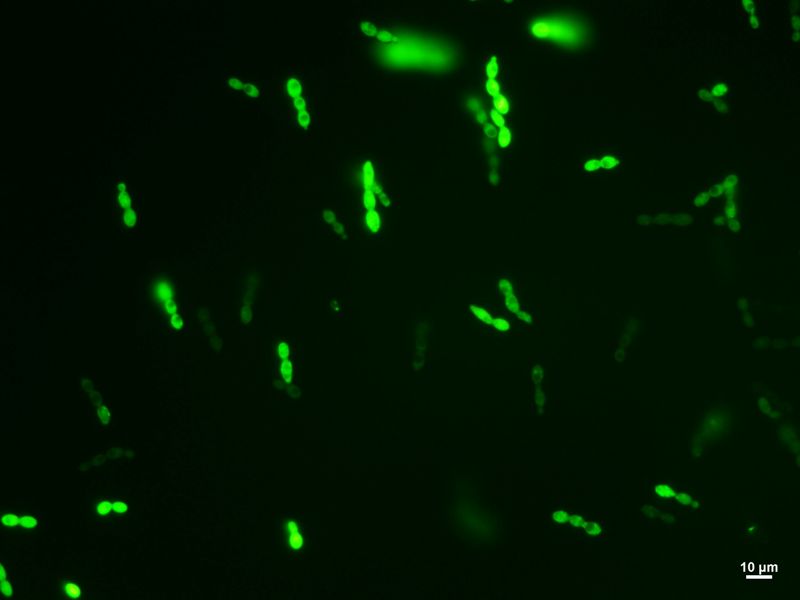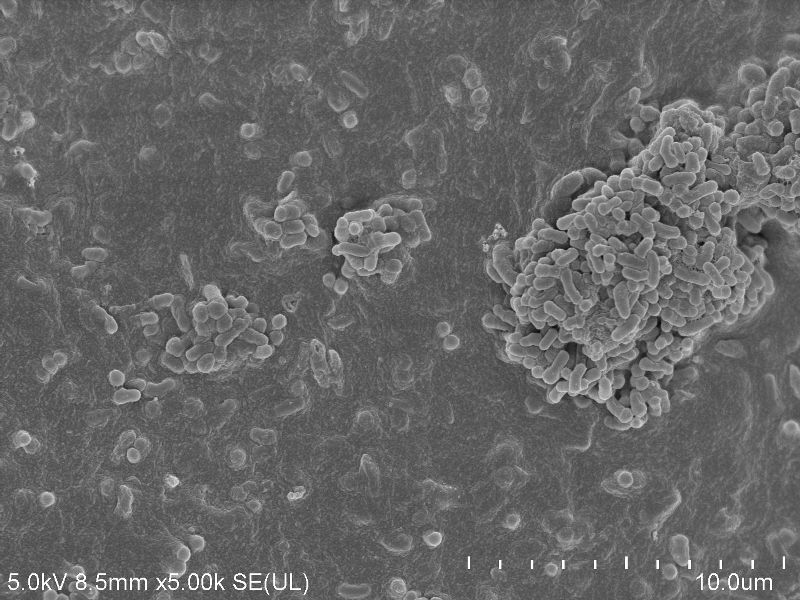PATENT
UNIERUCHOMIONE BAKTERIE POMOGĄ W OCZYSZCZANIU ŚCIEKÓW
12.08.2022
tekst: Małgorzata Kłoskowicz
e-mail: malgorzata.kloskowicz@us.edu.pl
Patenty Uniwersytetu Śląskiego
Artykuł jest częścią cyklu prezentującego efekty badań naukowców związanych z naszą uczelnią, którzy są współtwórcami ponad 600 wynalazków, wzorów użytkowych i przemysłowych oraz znaków towarowych.
Jest wiele rodzajów zanieczyszczeń, które przedostają się do środowiska naturalnego i mogą być szkodliwe dla organizmów. Należą do nich m.in. substancje farmaceutyczne z grupy niesteroidowych leków przeciwzapalnych (NLPZ). Przykładowo, aspiryna czy diklofenak obecne są w wielu dostępnych bez recepty lekach o działaniu przeciwgorączkowym i przeciwbólowym pod takimi nazwami handlowymi, jak: APAP, Gripex czy Ibuprom. Nie w pełni metabolizowane przez organizm człowieka, wydalane są w prawie niezmienionej formie, w której trafiają do oczyszczalni ścieków. Sytuacji nie polepsza często niewłaściwa utylizacja przeterminowanych leków, wyrzucanych do śmieci czy spłukiwanych w toaletach. Problemem są również technologie wykorzystywane w biologicznych oczyszczalniach. Te okazują się często niewystarczające w procesie usuwania ze ścieków substancji z grupy NLPZ. W konsekwencji przyjmujemy nieświadomie śladowe ilości tych związków, pijąc na przykład wodę dostarczaną do naszych mieszkań przez wodociągi. Wiele wskazuje również na to, że podczas pandemii ilość tych substancji w ściekach mogła się jeszcze zwiększyć ze względu na grypopodobny charakter przebiegu choroby COVID-19.
Biolodzy z Uniwersytetu Śląskiego, pracujący w zespole dr hab. Danuty Wojcieszyńskiej, prof. UŚ, od kilkunastu lat projektują i testują różne rozwiązania dla oczyszczalni, wspomagające proces oczyszczania ścieków właśnie z niesteroidowych leków przeciwzapalnych. Przebadali wiele szczepów bakterii, które mogłyby w naturalny sposób rozkładać substancje z grupy NLPZ.
Aby wybrane mikroorganizmy mogły jednak spełnić swoje zadanie, muszą przetrwać w skrajnie niesprzyjających warunkach panujących w oczyszczalniach ścieków, a dokładniej – w stosowanych tam systemach bioremediacyjnych. Po pierwsze, na bakterie niekorzystnie oddziałują toksyny obecne w ściekach. Po drugie, mamy w tym przypadku do czynienia ze środowiskiem o wysokim odczynie zasadowym lub kwasowym. Po trzecie wreszcie, nie jest to przecież środowisko niezamieszkałe, w związku z czym o przetrwanie walczy tam o wiele więcej lepiej przystosowanych mikroorganizmów.
– Z przeprowadzonych analiz wynika, że wyselekcjonowane przez nas szczepy bakterii mogą nie przetrwać w oczyszczalni ścieków – komentuje dr Anna Dzionek, współautorka badań. – Dlatego naszym zadaniem jest przygotowanie specjalnego nośnika dla wybranych szczepów, stanowiącego rodzaj ochronnego kombinezonu. Proces tworzenia takiej ochrony nazywany jest immobilizacją – dodaje.
Cel jest jeden. Należy zadbać o to, aby jak najwięcej bakterii przeżyło w systemach bioremediacyjnych i mogło skutecznie degradować substancje z grupy NLPZ.
Nośników służących do unieruchamiania bakterii może być wiele. Zespół, w którym pracuje dr Anna Dzionek, zaproponował wykorzystanie gumy ksantanowej, a rozwiązanie zostało objęte ochroną patentową. Stosowany powszechnie w przemyśle farmaceutycznym, kosmetycznym i spożywczym polimer, teraz ma szansę sprawdzić się również w bioremediacji.
Zdjęcie żywych i aktywnych komórek szczepu Bacillus thuringiensis B1(2015b) zaimmobilizowanych wewnątrz nośnika ksantanowego, wybarwionych fluoresceiną | fot. Anna Dzionek
Zdjęcie komórek szczepu Planococcus sp. S5 unieruchomionych wewnątrz gumy ksantanowej | fot. Anna Dzionek
– Niewątpliwą zaletą zastosowania nośnika jest nie tylko ochrona szczepów bakterii, lecz również porcjowanie substancji dostających się do środka takiego „kombinezonu”. To z kolei sprzyja efektywności całego procesu. Degradacja substancji farmaceutycznych następuje bowiem stopniowo, nie gwałtownie. Jest to szczególnie ważne w przypadku środowiska, w którym mamy bardzo wysokie stężenie substancji toksycznych – komentuje dr hab. Danuta Wojcieszyńska, prof. UŚ, współautorka wynalazku.
Ważnym jest, aby zaproponowany polimer nie wpływał negatywnie na pracę oczyszczalni. – Przykładowo, jeśli zastosowalibyśmy nośnik o dużej gęstości lub większych rozmiarach, mógłby stanowić zagrożenie dla pracujących tam urządzeń. Nasz wynalazek jest trwały, nietoksyczny dla szczepów bakterii oraz tani w produkcji. Co więcej, szczepy bakterii mogą się w nim utrzymywać dłużej, a sam nośnik może być odzyskany i wykorzystany ponownie – dodaje badaczka. Warto dodać, że już niewielkie stężenie gumy ksantanowej wystarczy, aby stworzyć odpowiednie warunki dla ochrony mikroorganizmów.
Obecnie z powodzeniem zakończył się etap testowania rozwiązania w warunkach laboratoryjnych. Naukowcy przygotowują się do rozpoczęcia badań w wybranej oczyszczalni ścieków.
Sposób immobilizacji mikroorganizmów, jak również nośnik do immobilizacji to wynalazki opracowane przez: dr Annę Dzionek, dr hab. Danutę Wojcieszyńską, prof. UŚ oraz dr hab. Urszulę Guzik, prof. UŚ z Wydziału Nauk Przyrodniczych Uniwersytetu Śląskiego w Katowicach.







